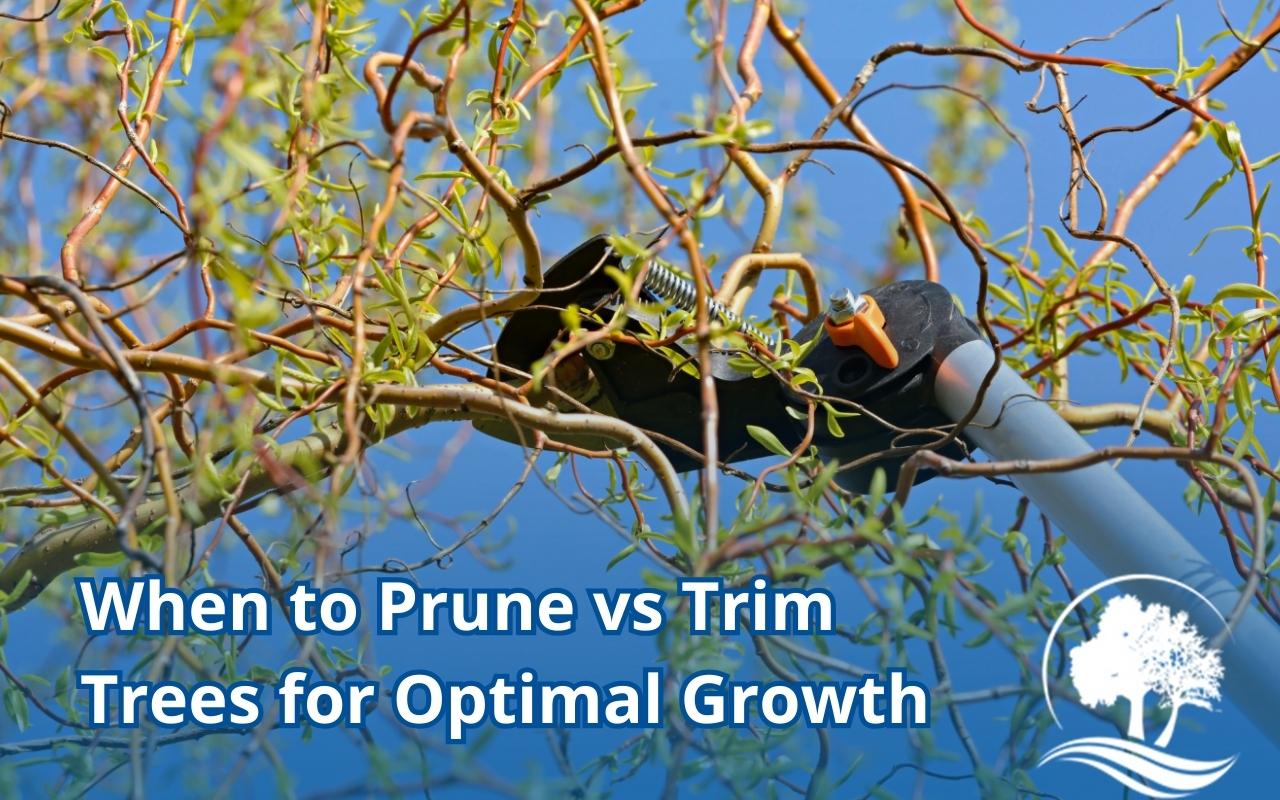
Many property owners wonder when to prune vs trim trees to keep them healthy and well-shaped. Timing is vital in tree care, as pruning helps remove weak or diseased branches while trimming controls overgrowth. Understanding the best time for each ensures trees remain strong, balanced, and visually appealing throughout the year. Knowing the correct timing for these tree care techniques prevents unnecessary stress on trees and allows them to thrive throughout the seasons.
The Best Time for Pruning and Trimming
Pruning: Removing Unhealthy or Weak Branches
Pruning is essential for tree health, as it removes dead, diseased, or weak limbs that could cause long-term damage. The right time to prune depends on the tree species and its needs:
- Deciduous Trees: Late fall to early spring, when the tree is dormant
- Flowering Trees: Immediately after blooms fade to preserve next season’s growth
- Fruit Trees: Late winter to encourage fruit production in spring
- Evergreens: Light pruning in early spring or late summer for shape maintenance
Pruning during the dormant season allows trees to heal quickly and prepare for new growth.
Trimming: Managing Overgrowth and Structure
Trimming is used to control excessive growth and maintain a tree’s natural shape. The best times for trimming include:
- Spring and Summer: Ideal for shaping trees that are actively growing
- Early Fall: Helps maintain structure before the tree slows down for winter
- Year-Round (As Needed): Necessary when branches interfere with buildings, power lines, or pathways
Trimming prevents overcrowding and ensures trees remain balanced in their environment.
How Weather Impacts Tree Pruning and Trimming
Why Winter Pruning Is Recommended
Pruning during winter months has several benefits:
- Trees are less vulnerable to disease and pests
- There is better visibility of the tree’s structure
- The healing process begins as soon as spring arrives
By pruning in colder months, trees experience less stress and respond with strong, healthy growth in the following season.

Why Overgrown Branches Need Regular Trimming
Overgrowth can lead to safety and health issues, including:
- Increased risk of branches breaking in storms
- Reduced airflow, leading to mold or fungal growth
- Interference with nearby structures and walkways
Regular trimming minimizes these risks and ensures trees remain structurally sound.
Signs That It’s Time to Prune or Trim
If a tree shows any of the following signs, it may need pruning or trimming:
- Dead or diseased branches that could spread decay
- Dense foliage blocking sunlight or airflow
- Overgrown limbs growing too close to buildings
- An unbalanced shape affecting the tree’s stability
- Weak or damaged branches that could fall in bad weather
Early intervention prevents small issues from becoming serious problems.
When to Prune vs Trim Trees for Long-Term Health
Scheduling pruning and trimming at the right time improves tree health, prevents hazards, and enhances overall appearance. If you need professional tree care, we offer licensed and insured services throughout Maryland, serving residential and commercial properties for over 17 years. Contact us today for a free estimate and expert advice.
